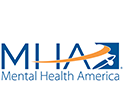Kaiser Permanente Gives Providers Evidence-Based Tools to Increase Adherence
At an industry conference years ago, I met an HIV-positive patient. We spoke about her treatment as well as her adherence program. “Who takes care of you?” I asked. “Kaiser Permanente,” she responded. Afterward, I did a little research and discovered this was one of the first HMOs created in the United States that takes care of millions of patients. Based in Oakland, California, their goal is “supporting preventative medicine and attempting to educate its members about maintaining their own health.”
Adherence remains a capstone in caring for patients after medications are dispensed and is an especially important issue for indigent populations. But now with implementation of health care reform fast approaching, patients will be required to take even more responsibility for their health, including adherence to medication regimens. Although no integrated health care structure is perfect, Kaiser’s integrative model fascinates me and allows its health care teams to implement successful adherence strategies.
For example, a Kaiser physician at the South San Francisco Medical Center conducted a hypertension study (“Improved Blood Pressure Control Associated With a Large-Scale Hypertension Program”) that compared their program’s results to those at the state and national level. The outcomes are startling:
- The Kaiser Hypertension control rate nearly doubled, skyrocketing from 43.6 percent in 2001 to 80.4 percent in 2009.
- In contrast, the national mean of hypertensive control went from 55.4 to only 64.1 percent during the same time period.
One aspect of this program included using single pill combination therapy, which has been shown to boost adherence. In a slightly different approach to adherence in hypertension, Kaiser Permanente Northern California and UC San Francisco were recently awarded an $11 million grant to fund a stroke prevention program by targeting and treating hypertension among African Americans and young adults.
By Googling “Kaiser Permanente adherence” the Kaiser Permanente Division of Research appears. Their published research draws from Kaiser Permanente units throughout their network, collaborations with academic institutions nationwide, and the HMO Research Network – a consortium of 18 health care delivery organizations with both defined patient populations and formal, recognized research capabilities. These resources provide clinicians and pharmacists with a plethora of study designs and disease states from which to choose and evaluate.
In the study “Determination of optimized multidisciplinary care team for maximal antiretroviral therapy adherence,” for example, a multidisciplinary care team was assigned to patients with new antiretroviral drug regimens. Because this model translated to improved adherence rates, clinical teams around the country now use some variation of a multidisciplinary approach, enabling each discipline’s area of expertise to benefit the patient.
Another article from Kaiser — “Health Literacy and Antidepressant Medication Adherence Among Adults with Diabetes: The Diabetes Study of Northern California (DISTANCE)” – demonstrates that adherence is multifactorial. This study’s conclusions underscore the importance of health care literacy components, simplifying health communications for treatment options, executing an enhanced public relations campaign around depression and monitoring refill rates.
In my experience, if someone with mental health issues does not take his or her medications, then regardless of disease state, the patient’s treatment falls off the track. I approach these difficult situations by drawing on the conclusions of the above studies:
- First, is there a different message I could give the patient? Or am I reaching the patient at a level of health care literacy he could understand? For example, I had a deaf patient who found it tiresome writing messages back and forth to me. When I realized he “speaks” to people via a teletype machine, I began communicating with him via word processing software. This made our communications less cumbersome. And this improved adherence to his regime because he was less frustrated.
- Next, the multidisciplinary approach is quite powerful. When I served HIV-positive patients in the South Bronx, if anything occurred that affected adherence, the prescriber, nurse, social worker or case manager immediately were made aware. Sometimes we would discontinue the regimen and other times we would tweak the regimen and get the patient back on treatment.
The real adherence tragedy for indigent patients is not whether they receive medication, but whether they have access to the tools, education and knowledge they need to take their meds as prescribed. Leveraging articles from resources like Kaiser’s Division of Research may be the solution to reversing the trend of low adherence.
Now we want to hear from you. If you’re a patient, has your doctor or pharmacist worked with you to improve med adherence? If you’re a provider, what resources have you found to be useful when helping patients understand why they should take meds as prescribed? Share your stories in the comments.



















